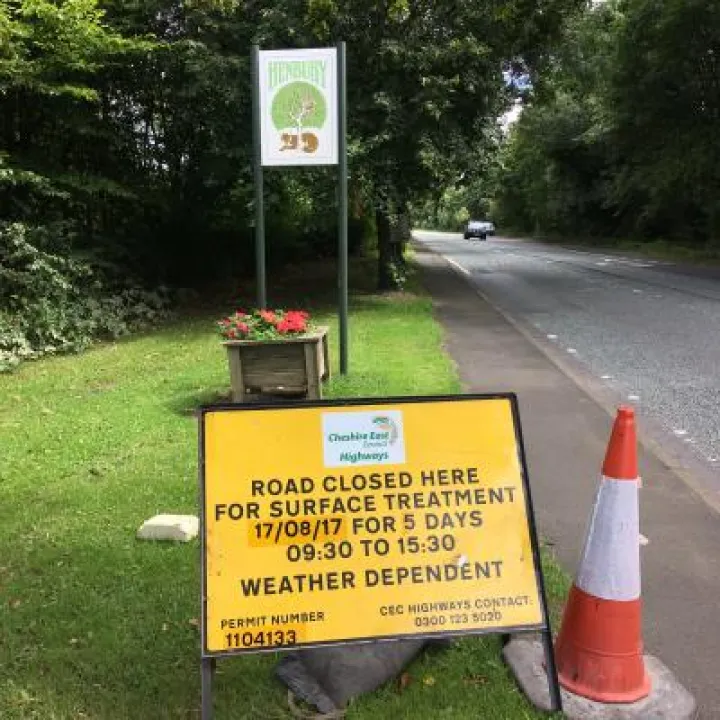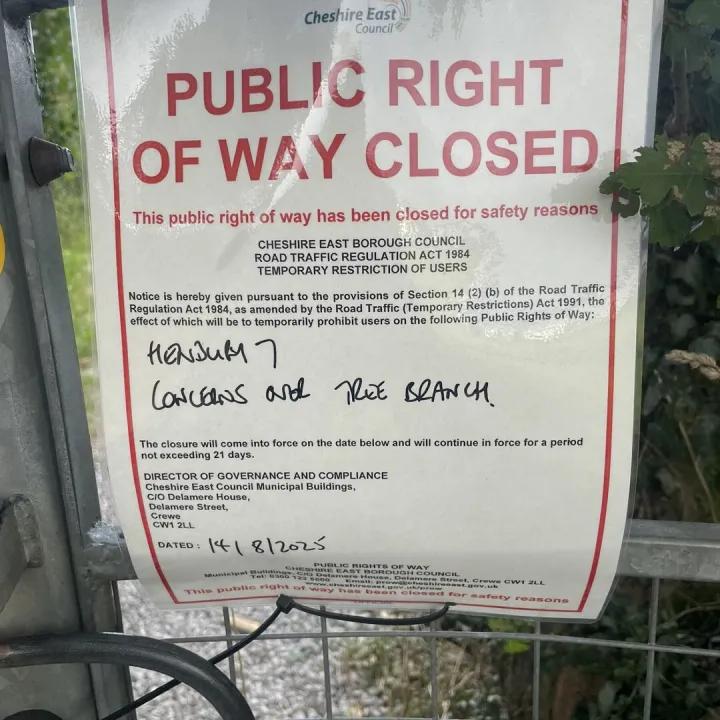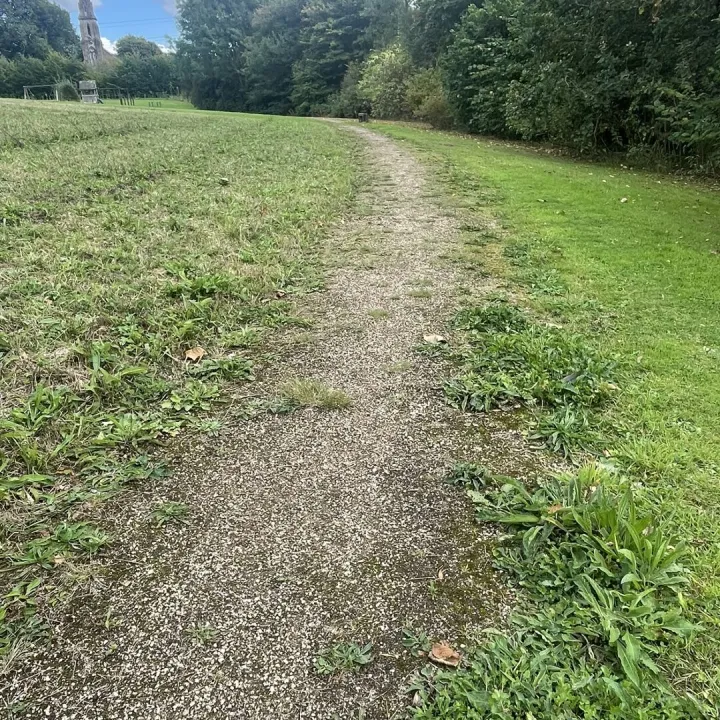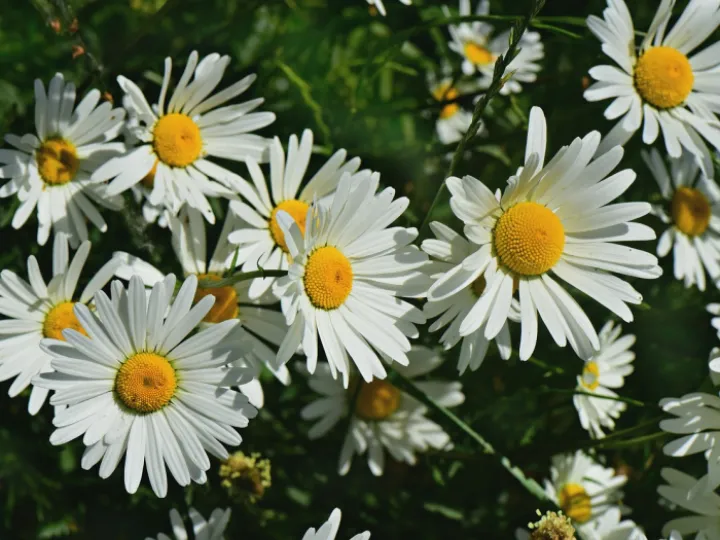







[
]It's summer at last and our faithful Dog Walker has found all these wonderful sights of nature in our parish.
So why not follow his footsteps and experience them for yourself?
[
]Occasional Notes from a Dog Walker
May 2024
A couple of lovely days to begin the month. The temperature reached 22.5 according to the dashboard readout in the car and it was shirtsleeves weather. Our beech hedges suddenly turned from brown to green and more may-blossom was obvious in the hedgerows on Dot the Dog's afternoon walk than on the same morning.
The mason bees continued to emerge from the bee nests – they don't swarm, but if they did that would be the appropriate description for the numbers we saw. Another queen wasp investigated an open window for a suitable place to set up home and came into the house – rapidly and humanely expelled (I recommend the sheet of paper and glass tumbler technique although she was very cross)!
A solitary swan appeared on the big field-flood, presumably in transit. Ladybirds emerged too (known as "bishy-barny-bees" perhaps because they hibernated in barns when S and I were children in Suffolk).
The swan moved off after a couple of days, but starlings and blackbirds were obviously collecting nesting material.
Ladies' Smock appeared more and more over the fields. A few dry days at the Bank Holiday weekend meant that neither Dot the Dog nor I needed hosing down on our return from walks, and a sunny morning brought out a green-veined white butterfly. We hadn't seen much butterfly activity at all thus far this year but they must have been about.
The whitebeam on "our" front (CEC grass verge) came gloriously into flower, closely followed by a display of "candles" on the horse chestnut tree by the gate into the small top field and the may-blossom became more obvious in the hedgerows with a lovely scent.
At last the bats flew in numbers at dusk. We had seen the odd one over the previous few evenings but suddenly there were more – however there didn't seem to be as many as in earlier years.
The Early May Blank Holiday dawned sunny and warm. Dot the Dog and I walked the fields and through clouds of flying insects. On our return home I changed out of my "dog togs" into my (equally scruffy) daytime clothes. As I stood by the bedroom window, half dressed, I saw half a dozen swifts wheeling and swooping above and behind the rooftops opposite. They too must have found the little beasts! Then off to the Millennium Green where several families were getting picnics ready and the newly refloored play area was getting a thorough road-test. The wild flowers were growing fast and there was apple blossom galore. Bluebells glowed on the bank under Church Lane and the marsh orchids had begun to show themselves.
The warm (hot) weather continued. Only a few days after the new mason bees emerged they were back exploring the nests and hopefully begetting another generation for next year. A fellow collie-walker told me she had seen an orange-tip butterfly on their morning round, but it didn't oblige me and Dot the Dog by reappearing for us. The swan came back – it seemed to have overnighted on the flood.
Along the track to Moss Cottage and Mossways from Andertons Lane, the little copse on a rise had hosted a bank of bluebells – now over – but replaced by a flush of red campion.
I had feared for the fate of the ducklings but they and their parents had evidently moved to the large field-flood as the smaller one dried up. Indeed, the ankle-deep muddy patches in the fields were dried up too, with cracks and fissures in the now hard ground – and it had only taken a few days of warmth although a good hard stamp of my wellington boots showed that the water table was only a couple of inches down.
Another few, hot, sunny days followed. The swan had apparently again overnighted on the large field-flood for it had been there on most mornings recently but as usual it had gone elsewhere by the afternoon. A Speckled Wood butterfly fluttered around the hedge on the way to the cottages, and a Small White flitted about. The sunshine had (inevitably) brought out the muck-spreader on the pylon field behind Henbury Rise and it had enthusiastically spread its load on the footpath as well as the field itself. The air was thick with the sweetish smell of fermenting dung...
At home a great tit managed to get through an open window into the kitchen and was gently ushered out. Dot the Dog was remarkably blasé about it! The following morning we saw a young blue tit showing the characteristic wing fluttering while perched in our crab-apple tree that indicated it wanted to be fed – then its Mum or Dad worked its way up the branch scouring the remains of the flowers, presumably for insects to feed the chick. A little while later a juvenile starling sat on the roof of our bird table and was fed for several minutes with half-digested suet pellets by its parent.
Things happened quickly over the fields. The heady "scent" of manure was everywhere again (even as far away as Havoc House). However, the morning after the muck spreading behind Henbury Rise the long grass in the field opposite the paddock had already been cut – presumably the previous evening after Dot the Dog and I had passed by. When we went out in the afternoon it had been whiffled into regimented lines and was being hoovered up and into a tumbril presumably for sileage, the two tractors in perfect lockstep.
Small White butterflies flitted through the garden and S spotted a Brimstone. The Mason Bees continued to investigate the bee nests.
Finally the weather broke and rain and drizzle came. A young great tit appeared in the garden. The newly manured field looked awful – it had clearly been sprayed with weedkiller before the muckspreader set out so the headlands where the nettles had adopted a rather ghastly yellowish colour a day or two previously were followed by the yellow-browning of the main grassy meadow – and the buttercups and dandelions. Bad news for the local bees and butterflies. In the 1960s when I was a lad a book was published with the title "Silent Spring", railing against the widespread use of "pesticides" and the potential effects on wildlife – how prophetic.
A day or two later the field was turned over but it must have been too late to sow a grain crop – maybe for regrassing then. Hot, humid days came. A small tortoiseshell butterfly visited the chive flowers in the garden and Dot the Dog was fascinated by an orange tip as it worked the mayflowers in the hedges in bright sunshine.
The swan continued to visit the field-flood most days. A heron flew over our garden in lazy fashion with slow wing-beats and headed towards Whirley Hall unusually – we normally see them flying roughly in the direction of Redesmere.
Another hot and sunny day; a warm (almost hot) dry breeze stirred a few leaves ineffectually. Butterflies were about in numbers. In the space of half an hour we saw two peacocks, an orange tip, a large white, a meadow brown and a small white. The large field that had recently been "turned over" was being seriously ploughed with a massive tractor and a huge implement – Dot the Dog took exception and was all for beating it up, but I thought it was rather too big for her to take on. The machinery was followed by what must have been nearly every corvid in the area – but no gulls – they haven't been about for a few days so we wondered if they had gone off for a seaside holiday. Then disaster: DtD dropped her ball in a large patch of long grass and I couldn't find it. On the way back she insisted we go again through the same area after having glared at me several times for not having the ball – and picked it up! I suspect she knew exactly where it was but found it too hot to bother chasing it...
Next day haze appeared over the ploughland – fertiliser being spread (over paths and hedges in a gentle breeze, too!).
The rain returned with yellow and amber weather warnings. The Mount Farm Drive became a stream again and Anderton's Lane was flooded. On the track to the cottages Dot the Dog investigated a shattered snail shell that looked like the work of a thrush (and I think there were others but deciding it wasn't very interesting after all she headed off fast to play ball). Presumably following the warm dry weather the gastropods had come out in force to feast on the wet vegetation.
Late spring moved fast. The first elder flowers appeared in the hedgerows towards the cottages – and the first blackberry flowers came too. A sunny blank holiday Saturday morning came and a few trustees (and a grandchild) planted wildflower plugs on the Millennium Green to fill some gaps where last autumn's very wet mowing had scalped the surface.
The Green was coming into bloom – a yellow sea of meadow buttercup at first sight, but a smattering of ragged robin, knapweed and ox-eye daisies were already there and more to come. Common and spotted marsh orchids were in flower all over the place. Downy roses, dog roses and guelder roses (not really roses at all but wild-type viburnums) had begun to flower. There was scent in the air! Butterflies enjoyed the warmth – meadow browns in particular, a few small whites and a holly blue (I think – it was certainly blue).
A broken blackbird eggshell lay under a tree on the footpath. It was neatly bisected so presumably had naturally hatched and the empty shell chucked out of the nest – it didn't look like the work of a jackdaw or magpie predator.
Then it rained again and after a few days the sun came back. In the fields the sunshine picked out the bright pink of the grass flowers counterpointed by the yellow of the meadow buttercups. With the aid of an app on my mobile phone ("Picture This") I identified several species of grass – Rough Bluegrass, Yorkshire Fog, Meadow Foxtail and Cocksfoot – some of which I knew, others not.
Cattle came back to the fields – I counted 8 head of juveniles, huddled together on their first day. So May ended.
As ever
Horrid of Henbury


